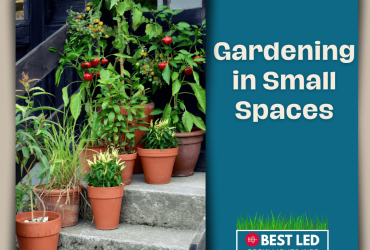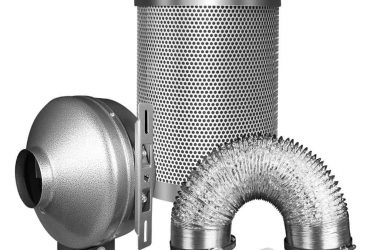How to Grow Succulents at Home
Over the years, I developed a love of succulents. Along with requiring minimal effort – making them ideal for my busy lifestyle – they’re beautiful. You can find succulents in an array of colors and styles, allowing you to cultivate an indoor garden that makes your heart sing.
But if you’re new to the world of succulents, you might have questions about how to grow succulents at home. How much light do indoor succulents need? Is there anything special you need to do to take care of succulents indoors? What about watering requirements?
While it may seem like you have a ton to learn, trust me, it doesn’t take long to get the hang of it. Here’s what you need to know.
Frequently Asked Questions About Growing Succulents at Home
Can Succulent Plants Grow Indoors?
Yes, you can easily grow succulents indoors. In fact, they’re incredibly low-maintenance houseplants. Along with tolerating drier, warmer conditions, they’ll survive if you accidentally neglect them a bit as long as you’re generally meeting their core needs.
How Much Sunlight Do Succulents Need?
Succulents are light-loving plants. Depending on the type, they usually need around three to six hours of sunlight per day. However, you don’t always want to start with direct sunlight.
Newly planted succulents can scorch if they aren’t used to full sun exposure. Since that’s the case, going with indirect sunlight or providing some protection by installing a sheer curtain is wise. That buffers the plant against the sun a bit while ensuring it still gets enough light.
Can You Use Artificial Light for Succulents?
Since you now know the answer to the question, “How much light do succulents need?” you may be worried if the window, shelf, or counter you have available doesn’t offer enough sunlight. However, you don’t need to be, as you can definitely use artificial light for succulents instead.
In many cases, you can get the best grow light for succulents delivered straight to your door. One amazing succulent grow light option is the GooingTop LED Grow Light. It’s a full-spectrum light in an incredibly convenient form factor. The clip design allows it to attach to nearly any table, while the bendable arm makes for easy adjustments. This LED light is also dimmable and has a built-in auto-off timer for added convenience.
Another one of the LED lights for succulents you want to consider is the Mosthink LED Plant Grow Light Strips. It offers full-spectrum light and three lighting modes along with auto on and off. Plus, the adhesive backing means you can install the light nearly anywhere, including under shelves and on walls.
How Much Water Do Succulents Need?
Here’s the most beautiful thing about caring for succulents; they don’t need much water. In many cases, you can water every one to three weeks and keep your succulents in good shape.
Precisely how often you’ll want to water may depend on your local conditions. If you’re in a hotter, drier area, you may need to water every one or two weeks. If you’re in a cooler, humid part of the country, two to three weeks may work better.
Keep an eye on your succulent for signs that it’s time to water. Usually, if the soil is dry to the touch and the leaves are starting to wrinkle, your succulent needs a drink. Water them that night, soaking the soil without spraying water on the leaves. Then, use the time between that watering and the previous one as an initial baseline.
How to Grow Succulents at Home: A Step-by-Step Guide
1. Get the Right Pots
Drainage is critical for succulents, so you want to choose pots that provide good air circulation and drainage. Along with holes in the bottom, go with a breathable material like ceramic or terracotta, as those will serve your succulents best.
2. Use a Specialized Potting Soil
Succulents have particular soil needs, so you’ll want to repot any purchased succulents or plant cuttings in the right kind. In most cases, you can find mixes explicitly designed for succulents(or cactuses) at your local home improvement store or online.
3. Choose Your Succulents
When you’re selecting succulents, research is your friend. Certain succulents thrive under different lighting conditions, so you may want to factor in the amount of light available in your preferred spot.
Also, growth patterns can vary. Some stay low; others get tall. Certain succulents trail, and others naturally produce pups. In many cases, the growth pattern dictates how much space a succulent needs. As a result, you’ll want to consider that when choosing.
4. Repot Your Succulents
In most cases, you’ll want to repot your succulents in reasonably short order if they aren’t in quality pots. Along with being less than ideal for long-term growth, many succulents from home improvement stores or similar retailers haven’t been repotted in some time. Often, that means the pots aren’t the ideal size for long-term growth. Additionally, the nutrient content of the existing soil – or the kind of soil used – isn’t suitable at this point.
Overall, repotting a succulent isn’t unlike repotting other plants. Begin by adding fresh potting soil to the new pot, digging a shallow hole in the center where the succulent will rest. Carefully remove the succulent from its current pot by turning it on its side and handling the plant near the base.
If the succulent doesn’t want to come out, use a tongue depressor or slim spatula to loosen the soil around the edges of the pot. Proceed carefully to ensure you don’t harm the roots.
Once the succulent is free, remove as much soil from the roots as possible. Usually, just a light brushing does the trick. Then, place the succulent in the hole in the new pot, adding extra soil if necessary and ensuring the roots are covered entirely while the leaves sit above the soil.
After that, water the succulent until you see water draining through the holes in the bottom. Keep an eye on the soil line as it may compress after watering. If you see root exposure, add a bit more to ensure coverage.
5. Care for Your New Succulent
Once the repotting is over, you’ll simply develop an ongoing care routine. Keep an eye on how the succulent changes, as shifts in color, shine, or texture can let you know if you need to adjust the LED lighting or watering patterns.
How to Grow Succulents from Leaves
There are two approaches if you’re trying to figure out how to grow succulents from leaves. If you have a healthy, larger succulent, you’ll take a cutting. Get a sharp, sterilized knife, cutting at an angle, ensuring about five inches of stem remains. Then, plant the cutting into fresh potting soil, adding a bit of water to encourage it to take root.
For smaller succulents, you’ll take a shallow tray and cover it in a layer of potting soil. Choose a healthy rosette and remove a few leaves at the base. Put the leaves on the soil, ensuring the node is above the soil line. When you see a rosette forming on the cut end, position it closer to the soil to encourage root formation. Then, pot it once the leaves grow larger, using the repotting process as outlined above.
Enjoyed this post? Pin it!





